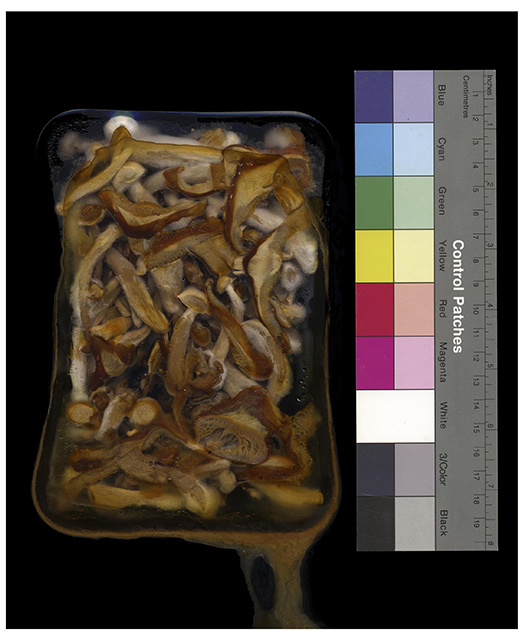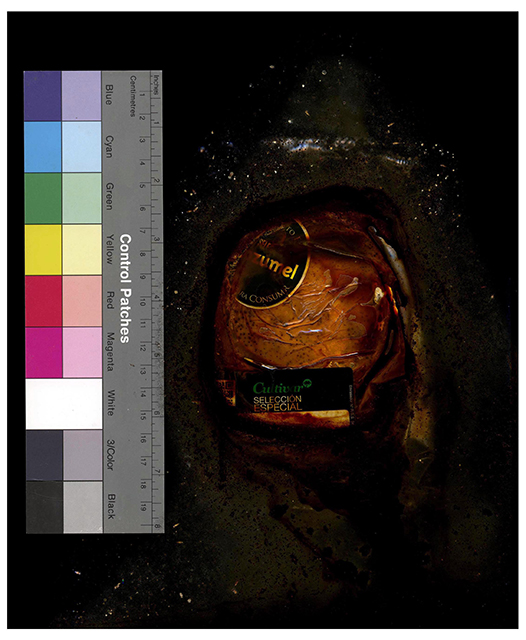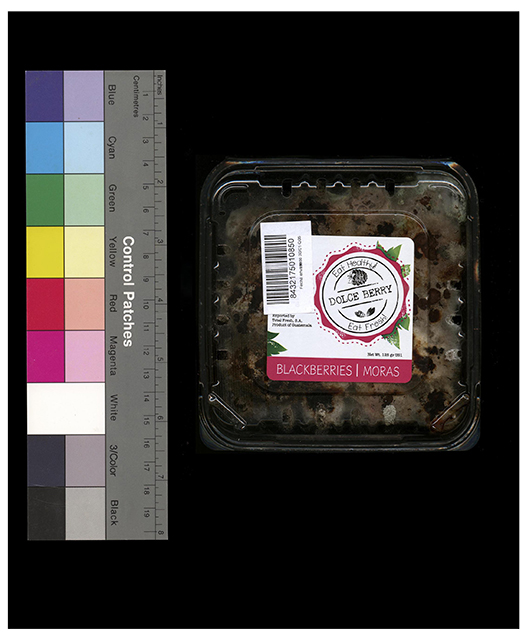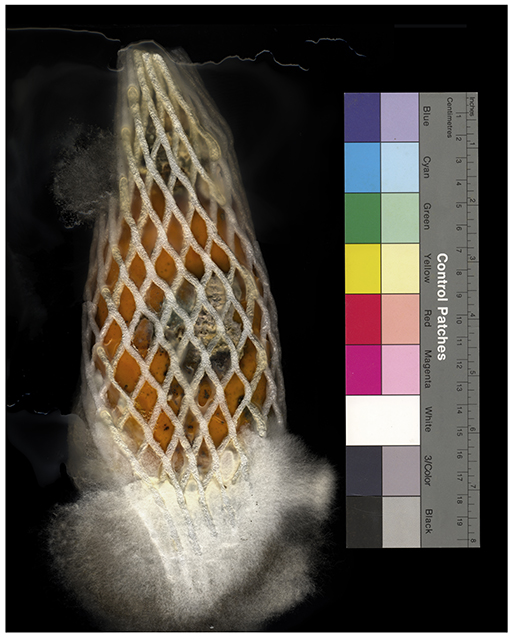.
Statement
Con esta serie señalo como la mercancía, atraviesa fronteras de forma antinatural, justo en este momento en que los gobiernos occidentales colocan cada vez más trabas al paso de personas.
Esta estructura permite el paso a los que tienen cierta identidad legal y bloquea aquellos que no son reconocidos y retan el sistema. Este sistema que castiga a sus vecinos con monedas sin valor donde poder comprar barato, donde las empresas consiguen el producto pagando más por el transporte que por el propio producto. Un sistema que se sustenta por ello en los combustibles, que utiliza la las estructuras de transporte para mover una mercancía de un territorio a otro que realmente no la necesita, ya que podría disponerla por sus propios medios.
Para hablar de esta distancia tóxica deposito en un escáner productos perecederos que digitalizo cuando ha transcurrido el tiempo que se tardaría en llegar a su lugar de origen con un coche.
Esta realidad es retratada como algo corrompido por ese recorrido traducido en un tiempo común, por ello hago referencia al coche por ser el transporte más extendido. Con la elección del escáner como herramienta para fotografiar y la tabla de color me apropio de la forma en que se catalogan documentos históricos, tratando de construir con esta serie un catálogo de estos errores en el tiempo, de este tiempo que intoxica el producto.
_ Características Técnicas .
En la actualidad hay una prueba de impresión tamaño 130x105cm con marco de madera color negro . La imagen está impresa en papel mate montado sobre Dibond y el marco no lleva vidrio. El texto aparece con color gris centrado en el margen inferior y un tamaño 18pt.

Statement
With this series I point out how the merchandise crosses borders in an unnatural way, right at this time when Western governments are placing more and more obstacles to the passage of people. This structure allows the passage of those with a certain legal identity and blocks those who are not recognized and challenge the system. This system punishes its neighbours with coins where they can buy cheaply, where companies get the product by paying more for the transport than for the product itself. A system that is therefore based on fuels, which uses the transport structures to move goods from one territory to another that do not really need them, since they could dispose of them by their own means.
To talk about this toxic distance, I deposit perishable products in a scanner that I digitalize when the time it would take to reach their place of origin with a car has passed. This reality is portrayed as something corrupted by that journey translated into a common time, so I refer to the car as being the most widespread transport. With the choice of the scanner as a tool for photography and the color table I appropriate the way in which historical documents are catalogued, trying to build with this series a catalogue of these errors in time, of this time that intoxicates the product.
Technical Characteristics.
At present there is a test print size 130x105cm with black wooden frame. The image is printed on matte paper mounted on Dibond and the frame has no glass. The text appears with gray color centered in the lower margin and a size 18pt.

 Travle by car to Kenong Xinqu, Shnghai Shi, China, 40 days driving 6 hours a day
Travle by car to Kenong Xinqu, Shnghai Shi, China, 40 days driving 6 hours a day  Travle by car to Shouth Africa, 30 days driving 6 hours a day
Travle by car to Shouth Africa, 30 days driving 6 hours a day  Travle by car to Piura, Peru, 3 days driving 37 days by boat
Travle by car to Piura, Peru, 3 days driving 37 days by boat  Travle by car to Guanacaste, Costa Rica, 1 day driving 19 days by boat
Travle by car to Guanacaste, Costa Rica, 1 day driving 19 days by boat  Travle by car from Valencia to Chimaltenango, Guatemala, 3 days driving 31 days by boat
Travle by car from Valencia to Chimaltenango, Guatemala, 3 days driving 31 days by boat  Travle by car to Linhares, Brasil, 22 days by boat
Travle by car to Linhares, Brasil, 22 days by boat